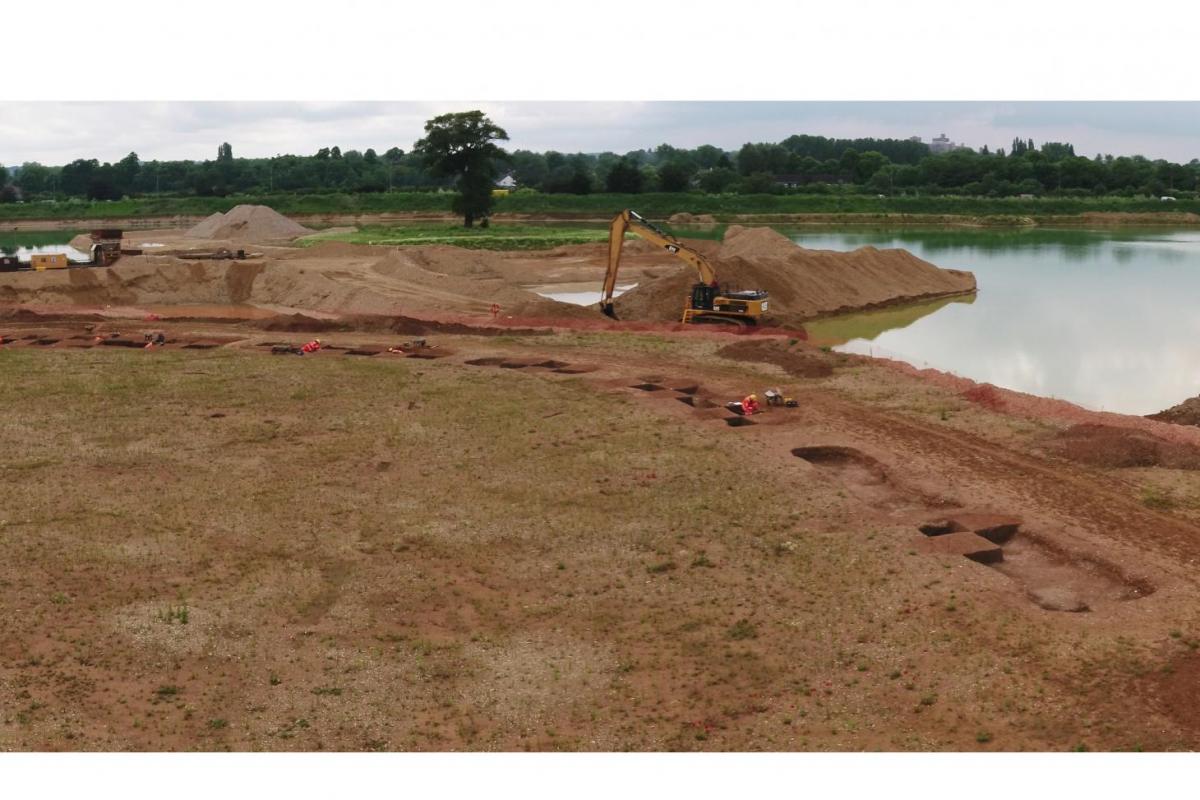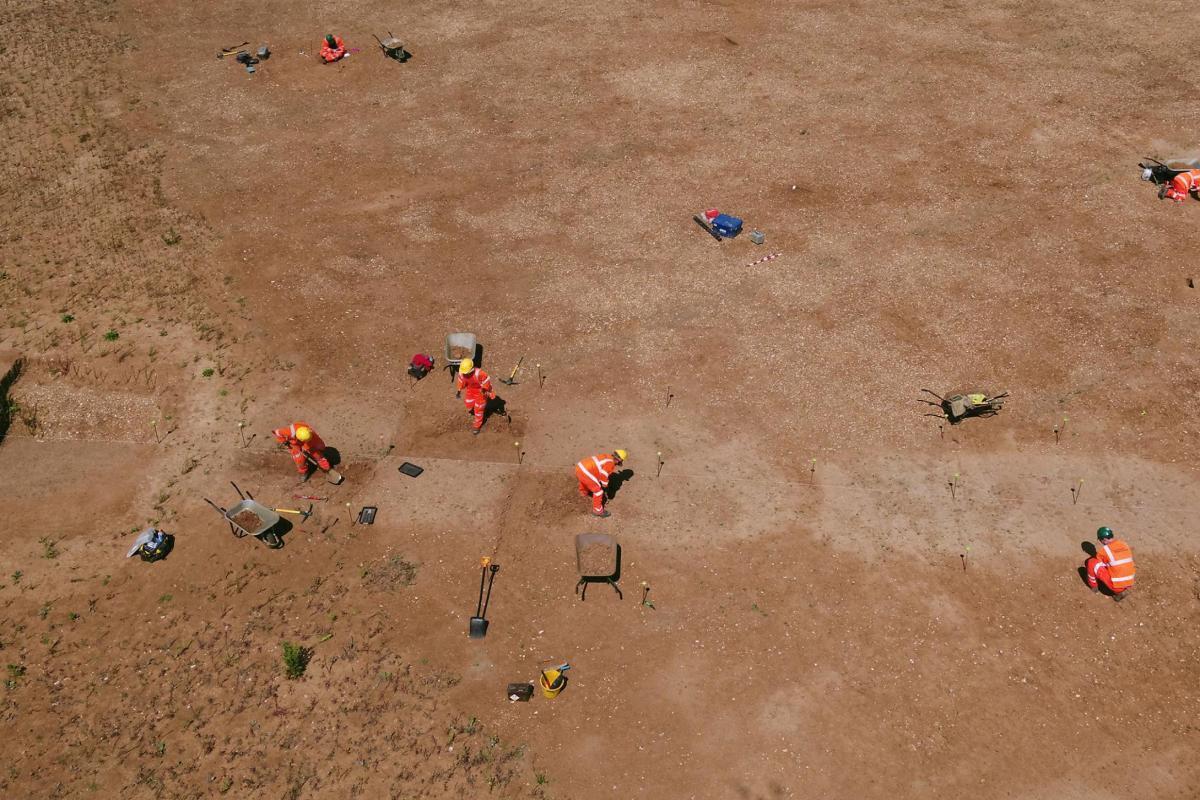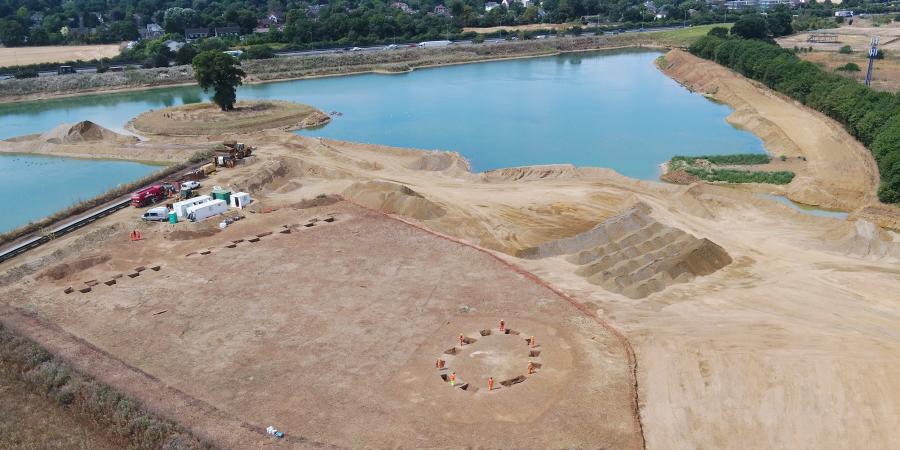From early summer 2018, archaeological fieldwork continued at CEMEX UK’s Riding Court Farm Quarry, Datchet. The team from Wessex Archaeology were kept busy excavating an Early Neolithic causewayed enclosure discovered during fieldwork in 2017. This season’s fieldwork included exposing the monument’s full circuit and interior, as well as topsoil stripping and further excavation to the south of the monument. John Powell discusses the excavation and the methods used to record this Neolithic monument.
Returning to the site
We were definitely excited to be returning to the quarry last year; having discovered the causewayed enclosure the year before, we knew we had a big year ahead of us.
Causewayed enclosures are one of the earliest types of prehistoric monuments in Britain and were constructed in a dynamic period of human history. We start to see domesticated crops and animals and new types of flint tools as well as the first pottery vessels in Britain during the Early Neolithic some 5,500 years ago. These are the sort of sites that you read and learn about from classic excavations like Windmill Hill, but to have the chance to excavate one is a fantastic opportunity.
The plan was to expose the remainder of the circuit and its interior and to excavate areas to the south of the monument.
Exposing the ditches
On our return to site the first job was to tidy areas exposed over winter, re-establish our sections and then continue to excavate the monument, at the same time topsoil was removed across the monument’s eastern half.
On the ground the causewayed enclosure is made up of a series of ditch segments separated by small gaps (or causeways). The Riding Court Farm enclosure is made up of around 24 ditch segments that form an oval shape with a perimeter of some 400 m.
Once exposed, each ditch segment is excavated in a chequerboard fashion, taking out sections from alternate sides, which allows us to draw a section along the entire length of the ditch (longitudinal) as well as cross sections (transverse).

Field techniques
As field archaeologists, we identify each different soil layer and remove each one in turn with artefacts collected from their respective deposits (contexts). This allow us to collect pottery, worked flint and animal bone or soil samples from each layer within the ditch. Any objects such as flint tools or worked bone are given object numbers and their position is plotted with GPS survey equipment. The finished sections through the ditch are photographed and drawn with context numbers issued and records completed for each layer.
As we excavate we are destroying the archaeological record, but, through the careful and accurate recording of each soil layer and artefacts this allows us, and other archaeologists, to study the sites formation processes from the archive.
Last year’s work identified rich contexts towards the base of the ditches, these are carefully excavated with trowels and brushes exposing the groups of finds. These important deposits are photographed, drawn and levels are taken before lifting the artefacts for return to the office. The fine craft of the field archaeologist is on show here with skilful cleaning and hand drawings made of these jumbled masses of animal bone, pottery and flint tools.

We use a mixture of traditional and modern techniques such as hand planning, photogrammetry with digital SLR cameras and GPS survey to produce models of these significant deposits. Aerial photographs showing the progress of the excavations have been taken using Wessex’s UAV, these images help to show the scale of the monument in its landscape setting.
Finds
We have had some truly exceptional finds this year, one segment has produced a near complete Early Neolithic pottery vessel, whilst another contained fragments of polished stone and flint axes. We have pretty much ticked off all the artefact types found in causewayed enclosures, with arrowheads, scrapers and flint blades among the most common flint tools, and human bone found in four segments.
An unofficial contest to see who has the best arrowhead, biggest axe or largest pottery sherds seems to have developed amongst the field team. Phil is currently in the lead on the pottery, with Orlagh taking the honours on the arrowhead front.
Snapshots of the Neolithic are coming to life around the enclosure and you can see moments of human action from 5000 years ago. It’s easy to imagine the scene when a pottery vessel or spread of pottery and bone was thrown or placed into the base of the ditches. Understanding why this material was placed in the ditch and what the people who put it there meant or intended may prove harder to untangle.




